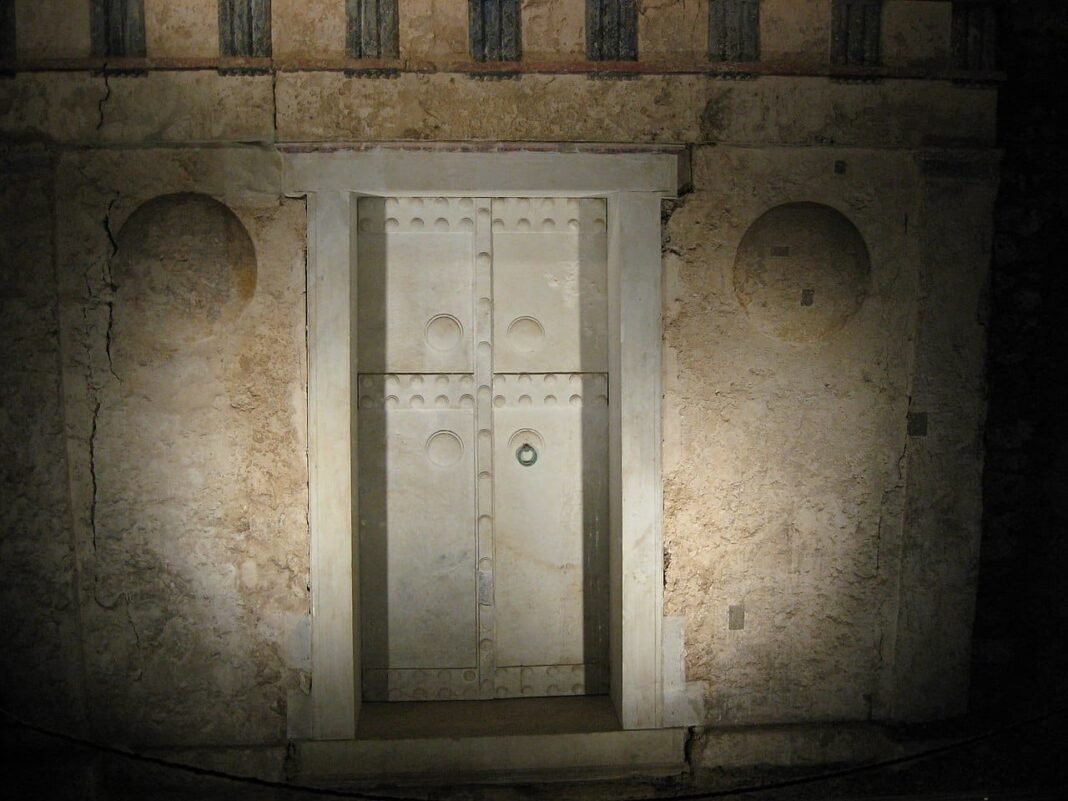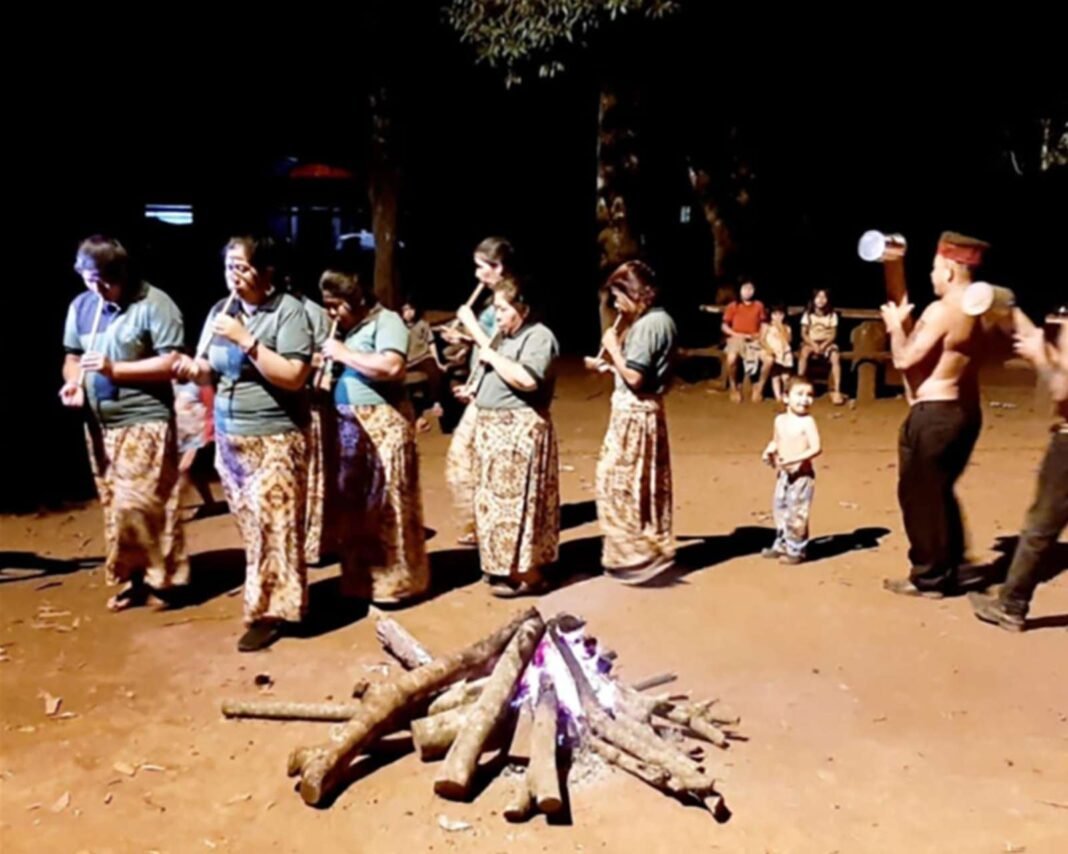
The tomb of Philip II of Macedon, father of Alexander the Great, has long been believed to be located within the Great Tumulus at Vergina, Greece, but a new study challenges this assumption. The research, published in the Journal of Archaeological Science, casts doubt on the claim that Tomb I at the site belongs to King Philip II, pointing to a different conclusion.
A previous study suggested that the skeletal remains in Tomb I at the Aigai royal burial complex belonged to Philip II of Macedon, his young wife Cleopatra Eurydice, and their newborn infant.
Researchers also call Tomb I the Tomb of Persephone because of the fresco that depicts the myth of the Abduction of Persephone.

A total of three tombs have been discovered in the complex. Tomb I remains an enigma after the latest study. It was looted in the distant past, which has compromised the site’s integrity. Tombs II and III were discovered intact, so safer conclusions can be drawn.
Archaeological findings indicate that Tomb II was the last resting place of Philip III of Macedon, Alexander’s half brother, while Tomb III belongs to Alexander IV, the posthumous son of Alexander the Great and his wife Roxana of Bactria.
Aigai was the first capital of the kingdom of Macedon. Today the site is very close to Vergina, a small town in northern Greece, 75 km (46 miles) from the city of Thessaloniki. Vergina is where the Museum of the Royal Tombs of Aigai is located, housing all the finds from the tombs and further excavations.
Who was the male occupant of Vergina’s Tomb I if not Philip of Macedon?

The elaborate decoration of Tomb I, with its magnificent frescoes depicting scenes from ancient Greek mythology, and its probable connection with the shrine above, give the impression that it belongs to a high status individual; a king or a general.
The new attempt to identify the occupants of Tomb I was supervised and conceptualized by Dr. Yannis Maniatis, PhD in Physics and Archaeometry, and an international group of researchers. This scientific project used DNA analysis for biological sex determination, osteological/odontological observations to complement the DNA analysis, and testing of skeletal remains to estimate the date of death, stature and other features. The researchers also deployed radiocarbon dating, stable isotope analysis and Sr-isotope analysis to finally determine that the skeletal parts belong to one male. Three or four bones belonging to a single female were also discovered.
The Bayesian analysis of the bones in-situ and the others “on the floor” showed that all bones belong to a depositional phase that dates from 404 to 362 calBCE (cal means calibrated or calendar).
Specifically, the leg bones on the floor that were found in the supine position are male and the position and orientation of the body is the characteristic male burial of the era. The other bones on the floor are also male, except the three or four that are female.
The analysis of the bones of the male individual indicate that he was 167 cm tall and died at age 25 to 35. Combining the radiocarbon dates of the in-situ and the male bones “on the floor” that belong to the male occupant, the researchers determine that the male individual was buried between 400 and 367 calBCE. If they allow for a possible collagen offset, this date becomes 389-355 calBCE at the latest. In either case, the male occupant died at least two decades before King Philip II of Macedon.
Who was the female?
The female bones in the tomb include a maxilla, two petrous bones (left and right) and a femur diaphysis, and all belong to the same female. The radiocarbon dating of these bones give a combined date of 399-359 calBCE and if a collagen offset correction is applied this becomes 389-351 calBCE, correlating with the date of death of the male. The female individual was 18-25 years old according to the osteological and odontological examination.
The same dating suggests that the male and the female were most likely entombed together as man and wife. So it was definitely not the burial place of Philip II of Macedon. This type of closed tomb structure with no door and massive limestone slabs for walls and roof would not allow any other burial once it was closed. This raises the question: if the tomb was closed, why were there only four female bones inside, while all the male bones “on the floor” or “in the fill” were still inside the tomb?
The answer is that Tomb I was used again at a later time. Bones of nonadults such as fetuses/perinates were found either “on the floor” or “in the fill,” along with animal bones, some of which had butchery marks. All these bones gave dates of the Roman period (150 calBCE—130 calBCE) so they have no relation to the original adult occupants.
The presence of fetus/perinates in the tomb indicates that the place was used by the Romans as a place for disposing of dead infants and animal remains.
No Tomb I activity after 2nd century CE
No activity in Tomb I took place after the 2nd century CE. The opening that was made by looters in 274/3 BCE was sealed and the tomb was likely concealed with stones and other materials.
Research on Sr-isotopes of teeth enamel from both male and female revealed that the in situ male (ISM) lived his early years, at least until aged 7, away from Pella and Vergina. The exact place cannot be determined.
Based on the general Sr-isotope database, he could possibly have lived in Northwest Greece or further north as far as upper Macedonia, or even in the Peloponnese, Southern Greece.
The female, on the other hand, has an Sr-isotope signature that indicates she was probably a native of the greater Pella area and spent her childhood in the region and had apparently died there as well.
The identities of those buried in the tomb remain unknown, though they are believed to have been high-status members of society.


